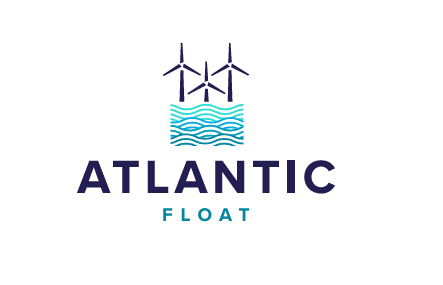
AtlanticFloat

- Title:
-
AtlanticFloat
- Start Date
-
01st March, 2024
- End Date
-
28th February, 2027
- Funding Body
-
SEAI RD&D 2023
- Coordinator
-
MaREI at Univeristy College Cork
- Project Partners
-
Rockall Research Ltd., Dublin Offshore Technology, Munster Technological University and Wind Energy Ireland
- Principal Investigator
- Project Manager
- Research Area
-
Offshore Floating Wind
Introduction
The programme for the government has committed to installing at least 30GW of floating wind off the Irish Atlantic coast. The offshore wind sector generally assumes that the commercial rollout of floating wind will be a natural extrapolation from fixed offshore wind. However, installing and operating floating wind farms is extremely challenging and a number of issues remain unaddressed. It has been demonstrated that floating platforms can be developed to support 15MW+ turbines, but the viability of floating windfarms in North Atlantic environments, which are among the most extreme in the world, remains unproven. Floating platforms are dynamic and move in response to the environmental forcing conditions, i.e. wind & wave. These platform motions can impact accessibility, working conditions and component lifetimes.
This project focuses on the dynamic nature of floating wind turbines in Atlantic conditions, and the impact that will have on the structural design of the platform, turbine and moorings, as well as the nacelle working conditions for O&M activity. The premise is that the motion of current platform designs deployed in Atlantic sites will limit O&M, impact reliability and increase CAPEX. The project will determine the criteria that platforms will need to achieve in order to operate reliability and achieve 90+% availability. In addition to addressing fundamental questions related to floating platform requirements, AtlanticFloat will also contribute to the development of an innovative floating platform and a novel mooring system that reduces platform loadings and motions as well as the footprint of the floating wind turbine.
Aim
The project includes a programme of engineering design, numerical modelling and wave tank testing of Floating Offshore Wind technologies. It will determine the readiness of Floating Offshore Wind for Ireland’s Atlantic waters, in terms of the limiting criteria for platform motion with respect to the structural and mooring design, as well as the human factors associated with working onboard.
Work Packages
WP1 Project Management
WP2 Numerical Modelling
WP3 Physical Modelling
WP4 Moorings and Structural Design
WP5 Human Factors
WP6 Dissemination, Communication and Exploitation
Deliverables
WP1 Project Management
- WP1-D1: Data Management Plan
- WP1-D2: IPR Plan
- WP1-D3: Project Handbook
- WP1-D4: Journal publications (Aim 3+)
WP2 Numerical Modelling
- WP2-D1: Basis of Design
- WP2-D2: Numerical Modelling Report
- WP2-D2: Numerical Modelling Validation Report
WP3 Physical Modelling
- WP3-D1: Physical model test description
- WP3-D2: Load, motion and wave data package
- WP3-D3: Data Analysis Report
WP4 Moorings and Structural Design
- WP4-D1: SOFWind Structural Design Parameters
- WP4-D2: TLP-based LRD Preliminary Design Report
- WP4-D3: Report on Effect of Stability on Turbine Design
WP5 Human Factors
- WP5-D1: Report & methodology on motion limit values for FOW maintenance
- WP5-D2: report on motion performance characteristics of modelled FOW systems
- WP5-D3: Report on limiting sea-state conditions & maintenance window durations
WP6 Dissemination, Communication and Exploitation
- WP6-D1: Communication & Dissemination toolkit
- WP6-D2: Stakeholder engagement plan
- WP6-D3: Stakeholder engagement through WEI Conferences, Working Groups and committees
- WP6-D4: Disseminate the final project report
Engagement and Outreach
WEI’s role within the project will be to strategically execute a communication dissemination and stakeholder engagement strategy.
Contact
Name: Kevin Leyne, MaREI | Email: ei.ccu@enyel.nivek
Name: Daire Horgan, WEI | Email: moc.dnaleriygrenedniw@nagroh.eriad




